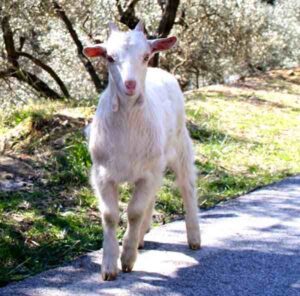Do you know how to drench a goat? If not, you are in the right place. Here we are going to discuss more about how to drench a goat.
By the way, before discussing more about ‘how to drench a goat’, let us first explain what is drenching. Drenching is the method used to give medicine by mouth, and is normally used to treat animals against worm infections.
This method usually refers to dewormers and also medications syringed into a goat’s mouth and down the throat. Drenching can involve a simple syringe, as with most dewormers. You can also use a large syringe or a drench gun for the purposes other than deworming.
Place the drench gun or syringe into the mouth of your goat and push the plunger, after adjusting the proper amount of medication or dewormer.
How To Drench A Goat?
Drenching process of your goats will be much easier, if your animals are cooperative. This process will take more time and effort, if your goats are not cooperative and friendly in nature.
You will be able to keep your goats free from parasites, if you perform drenching on a regular basis. Usually goats need to be drenched after every 8 weeks. However, read more about the drenching process of a goat.

Step 1: Preparation
Before you start drenching a goat, you need to ensure that you have all the necessary equipment and medication. Here are a few things you will need:
- Drenching gun or syringe
- Medication
- Bucket
- Towel
- Water
You should also make sure that the goat is restrained properly. You can either tie the goat’s head to a post or have someone hold the goat’s head while you administer the medication.
Step 2: Mixing the Medication
The next step is to mix the medication according to the instructions on the label. It is important to measure the correct amount of medication based on the weight of the goat. Using too little medication may not be effective, while using too much medication can cause harm to the goat.
Once you have measured the correct amount of medication, mix it with water in a bucket. Stir the mixture until it is well-mixed.
Step 3: Filling the Syringe
If you are using a syringe, fill it with the medication mixture. Be careful not to let any air bubbles form inside the syringe, as this can cause discomfort to the goat and decrease the effectiveness of the medication.
Step 4: Administering the Medication
Now it is time to administer the medication to the goat. If you are using a drenching gun, insert the nozzle into the goat’s mouth and slowly press the plunger to dispense the medication. If you are using a syringe, insert the tip into the goat’s mouth and slowly push the plunger to release the medication.
Make sure that the medication is not going into the goat’s lungs; it should only go to the stomach. You can ensure this by tilting the goat’s head back slightly while administering the medication.
Step 5: Finishing Up
Once you have administered the medication, remove the drenching gun or syringe from the goat’s mouth. Use a towel to wipe any excess medication from around the goat’s mouth.
It is also important to keep the goat from eating or drinking for a few hours after administration to allow the medication to take effect.





